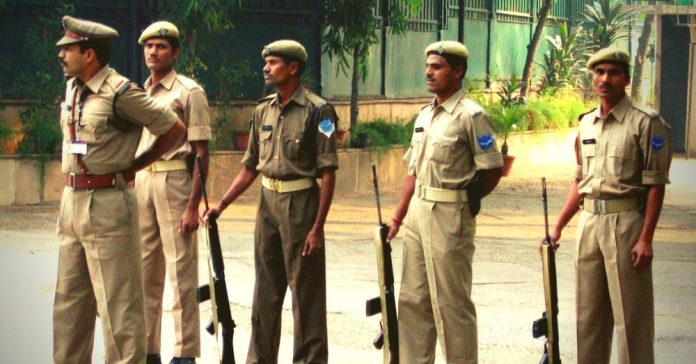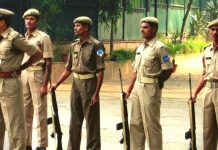This article is written by Vinayak Gupta, from Dr. Ram Manohar Lohia National Law University, Lucknow. This article talks about the corruption prevalent in the police department and talks about the ways to fight it and gives an introduction to various laws to curb ongoing corruption.
Table of Contents
Introduction
Every person who happens to be an Indian citizen or resides in India must have encountered at least once, a situation in his/her life where he/she had a chance to get away easily by bribing a government official. Incidents involving corruption by means of bribery is a common thing and is prevalent almost at every different level. Corruption could be termed as a two-way system that works on the principle of giving and take and is mostly devoid of any social considerations. It is at times like these when a person is met with a hard choice either to bribe and get away easily or to take the high road and prevent corruption from spreading.
Corruption is something that is deeply rooted in our country. Though it is prevalent in every part of the world, India ranks 80 out of 198 countries in the corruption perception index which itself signifies that India still has lots of scope for reducing corruption prevalent at different levels. The police department is not untouched by the corruption that is prevalent in the department at almost every level and in different forms. There have been instances where high ranking police officials were found to be indulged in corruption activities and there have also been instances where low ranking police officials were caught red-handed taking bribes. This article talks about the corruption present in the police department and how it affects the urban population in general and what are measures taken by the government to make the police department corruption-free.
The relation between police corruption and urban population
Activities of government institutions have a direct implication on the general public including the urban population. The impact of police corruption could be far-reaching. Corruption has been termed to be more dangerous than terrorism or any other such activity itself. If terrorism has taken countless lives, so has corruption with its deep root in the police department. A recent incident that took place in Kanpur city of Uttar Pradesh stands as a testimony to that.
The recent incident that took place in Kanpur is the case of notorious mafia Vikas Dubey who thrived on the corruption prevalent in the police department. The fateful incident took place on 3 July 2020 in the native village of Vikas Dubey where eight police officers were shot down who was going to arrest Vikas Dubey. It is supposedly believed that some corrupt police officials who were on the payroll of the mafia tipped him off about the arrest. This made him prepare for the ambush on the cops which ultimately led to the death of eight cops due to corruption.
This incident is only one example of how corruption rooted in the police department affects the public and administration. There are more incidents like this that have happened.
In Lalita Kumari vs. Govt.of 2 of 19 U.P.and others (2013) it was noted by the Hon’ble Supreme Court that police officials are duty-bound to register a case that is brought to them. Several times police officers stationed at the police station failed to register the case of the victim in the form of FIR because of the bribe they received in return for that thereby promoting corrupt practices. It is also noticed that sometimes these police officials may deliberately and systematically participate in organized crime themselves.
Corruption also takes a toll on the hard-earned money of the general public. The citizens pay taxes that are given in the form of the salary to the police official. The fact that bribe-givers are often in distress and the capacity of the personnel to use or misuse their powers and discretion to extort bribes leads to the disbelief of the general public in the system of justice through the police department and takes a toll on the hard-earned money of the public twice.
There is certainly more to the relation of corruption prevalent in the police department and its effect on the general public. These incidents and examples are only the tip of the iceberg.
Instances of police corruption
In Afghanistan, the situation of police corruption is so diabolical that the general public has to take the assistance of the Taliban against their own government. Luckily the situation in India is better than that of Afghanistan, yet it is not so good either.
There are instances of police corruption which involves beating poor people for example rickshaw pullers, peddlers, hawkers, and labourers etc. on small pretexts and snatching away their money. There are also instances where police officials take ‘Hafta’( an amount of money fixed weekly) from the shopkeepers in order to let their illegal shop run or letting them encroach on the public footpath thereby causing problems to the general public. These are all common causes of corruption that police officials indulge in on a regular basis.
As the ranking of the police officers increases the amount they ask for the bribery increases along with it because the need and greed grow along with it. According to the reports of the anti-corruption bureau, policemen were the most corrupt during the lockdown period in India among all the public servants in Maharashtra. In one of the significant cases in Thane, a sub-divisional police officer asked for a bribe of a huge amount of rs. 12.5 lacs. It was reported that the initial amount of bribe asked was Rs. 50 lacs which the complainant bargained and brought down to 12.5 lacs.
Incidents and instances like these are common practice for corrupt police officials. Sadly most of the cases go unnoticed or unreported but the cases for which corruption cases are filed comes under the purview of Prevention of Corruption Act, 1988, and the procedure and formalities mentioned under this act are enforced to prosecute the corrupt official.
Laws brought out to curb corruption in the Police department
The government and the people of India, luckily, haven’t turned the blind eye towards the corruption prevalent in different government organizations including the police department. Time and again there have been agitations and protests to bring out strict laws to deal with the prevailing corruption at different levels. A notable non-violent protest was started by Anna Hazare in 2011 to make the Lokpal bill more stringent and cover every official from the top level to bottom under its purview. When The Lokpal and Lokayuktas Act, 2013 was brought in the Lok Sabha it was deemed as the ‘Vijay Diwas’ of ‘Aam Aadmi’ against corruption.
Similarly there are other laws that seek to curb the corruption prevalent in the government organisation including the police department. Some of the laws are discussed here.
The Prevention of Corruption (Amendment) Act, 2018
The Prevention of Corruption (Amendment) Act, 2018 was initially introduced in 1988 as an attempt of parliament to curb and combat corruption prevalent in government agencies and public sector businesses.
Police department officials are the public servants, thus they come under the purview of this act. The provisions of this act are as follows:
- Giving and taking bribe is an offence.
- Those public servants who are convicted of taking bribes could be incarcerated for three to seven years besides being fined.
- For the first time not only the official taking bribe is to be imprisoned but under the amendment, the person giving a bribe could also be imprisoned for up to seven years or could be fined, or both.
- Any corruption case that involves a public servant, a factor of ‘undue advantage’ will have to be established.
These are some of the provisions of the act that acts as a deterrent for police officials to indulge in corruption activities.
The Foreign Contribution Regulations Act, 2010
The Foreign Contribution Regulations Act, 2010 (FCRA) was enacted by the parliament in the year 1976 but the major modifications in the act took place in the year 2010. This act was brought in order to regulate foreign contributions (especially monetary donation) especially to key government officials and public servants including judges, legislators, political parties, NGOs, and police officials. In order to curb bribes being routed in the form of foreign donations to the officials, this act was enacted. A breach of FCRA could invite imprisonment up to five years or a fine, or both.
The Central Vigilance Commission Act, 2003
Under The Central Vigilance Commission Act, 2003 the central government has constituted the Central Vigilance Commission (CVC). CVC acts as the watchdog that is assigned the task of inquiring into the offences alleged to have been committed under the Prevention of Corruption Act. The Central Vigilance Commission is required to work impartially and free of executive control in order to make their investigation unbiased and neutral. The Central Vigilance Commission has the power to initiate investigation against police officials who are alleged to have been indulging in corruption activities; it can also refer the investigation to CBI.
The Lokpal and Lokayuktas Act, 2013
The Lokpal and Lokayuktas Act, 2013 came into existence after protests led by Anna Hazare and upheaval of the general public and. This bill was introduced in the parliament for the establishment of Lokpal for the union and Lokayuktas for the state. This bill basically seeks to perform the function of an ombudsman and enquire into the allegation of corruption against public servants that include even the Prime Minister in its purview.
These are some of the laws introduced by the government to check the ever-increasing disease of corruption in the police department and to stop it from growing any further and affect the public in general.
Reasons for police corruption
The reason for corruption in the police department could not be zeroed down to a single factor. There are many reasons like the salary, working hours, nature of the job, and the problem of accommodation for police officials that lead to the corrupt practices these officials opt for. Besides these factors, the reason for the corruption prevalent in the department could also be totally philosophical and based on the greed of the officials.
One of the major reasons for corrupt practices prevalent in the police force is that the number of required police officials and their strength has not been kept at pace with the growing demand of an economy and population. This is the reason that the supervision on the police officials has become low and to some point ineffective, adding to the corruption in the department.
Another major reason for the cause of corruption in the police department is the ambiguities in legislation that gives police the power of discretion whether to act or not to act on the offence brought to them. For example, police discretion would apply on the case of the accused under Scheduled Caste and Scheduled Tribe (Prevention of Atrocities) Act, 1989, if the accused really committed an offense provoke atrocity towards the Scheduled Caste or Scheduled Tribe person. Similar is the situation in child labour cases, The Commission Of Sati (Prevention) Act, 1987 etc. Hundreds of unnatural deaths which fall under the above cases are closed without even a proper investigation.
Payment of bribes to high officials in order to get posted at the desired location or to get promoted is another common phenomenon of corrupt practices in the police department. In order to recover the cost incurred in the illegal process of transfer or promotion. The police officials who spent large amounts of money in order to bribe the higher official, try to recover these costs through the source of corruption in the form of bribes from the general public. More often than not the general public have to resort to the means of the corrupt cops in order to easily get away easily and avoid attracting a higher penalty.
Suggestions for reducing corruption
Several analysts have pointed out the fact that there could not be any single anti-corruption strategy to fight corruption in the police department. The approach to fighting such a complex issue needs a multi-faceted approach. Secondly, no absolute solution for curbing corruption in the department is possible, although it is totally possible to reduce the corruption up to a great extent.
The government can start to address the issue of corruption in the police department by making the process of transfers and promotions more transparent. In the era of technological advancement, the government should focus on technology to devise devices to reduce corruption. Using the technology, the government should make software that automatically generates the posting of the police officer at a certain time the transfer is bound to happen.
It would drastically reduce the corruption which prevails in the garb of asking money for transfers. Secondly, the government should draft well-articulated objective criteria for the purpose of promotion that should be abided by while promoting the official in order to limit personal judgements wherever promotion of an official is concerned, thereby reducing chances of corruption up to a huge amount. Another step that could be taken by the government is to form a committee to check the credential of officials that have been promoted in order to restrict the practice of promotion through bribing. This would not only help in reducing corruption but it would also help in increasing the healthy competition and bringing out the most deserving candidate a promotion.
The role of civil society could also play a huge role in curbing the corrupt practices of the police. Civil society organizations including the media could play an important role in the police reforms. It is a known fact that in the past civil society organizations, as well as media organizations, have played a key role in raising awareness about ongoing corruption scandals and driving the reforms to curb them. Active participation of civil society and media organizations in checking the corruption prevalent in the police department could help in reducing the corruption up to some extent.
The government should increase the scope of technology. The non-registration of the FIR at the police station is one of the biggest sources of corruption in the police department. There are still some states in India that do not have the service of online registration of FIR. Since registering FIR is the first step in the process of getting justice delivered it is also the main source of getting bribes from the general public. The use of technology for the registration of FIR could change this scenario.
Besides the government and public imposed reforms on the police officials, an environment and education should be given to the police officers from the starting of their career where they are taught that corruption is like a termite in the system and they should fight to do away from that termite.
Conclusion
Amongst all the executive wings of the government, police department and police officials have the maximum visibility and they are constantly in touch with the general public. Their conduct should be at their top in order to send a good message to the public and to win their trust. Police could not perform their duties efficiently until and unless the public trusts them. The major task of the modern police officers and the department remains to change the former image of the police as the most corrupt in their stance. It is of imperative importance that a nationwide determination to combat corruption and strategy should be devised to finish the disease of corruption that impacts the general public in negative ways and is harmful to the future of this country. It remains to be seen to what extent India is successful in fighting the disease of corruption.
LawSikho has created a telegram group for exchanging legal knowledge, referrals, and various opportunities. You can click on this link and join:
 Serato DJ Crack 2025Serato DJ PRO Crack
Serato DJ Crack 2025Serato DJ PRO Crack











 Allow notifications
Allow notifications



